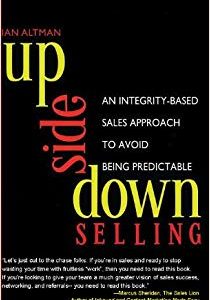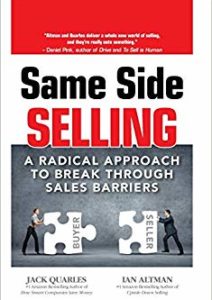Recently I listened to Brad, the CEO of a $20 million technology company, conduct his pipeline review with his sales team. It might sound odd that the CEO was running the sales meeting, but it is not uncommon to see CEO’s running the sales organization in companies as large as $40 million in revenue.
Brad had their CRM (Customer Relationship Management) tool projected on the wall. He sorted the opportunities by salesperson. As he went through each opportunity, Brad asked the designated salesperson, “This one says it’s closing by the end of the month. Anything new? OK. How about this one? Anything new?” In each case, the salesperson would give a brief answer along the lines of one of three things: 1) “I’ve got a call into them.” 2) “We had a good discussion/meeting, and it looks good.” Or 3) “I think it’s going to slip into next month.”
Does this sound familiar?
If you manage salespeople and this sounds familiar, don’t be alarmed. It’s candidly how most of the sales meetings I observe have been conducted for years. The simple problem is that style of pipeline review is centered on what you want (i.e., The Sale) instead of what the customer wants or needs (i.e., Results).
Here are 4 questions managers should ask salespeople, and answers salespeople should know for each of their customers. Do this, and you’ll have a clear sense of which pursuits are real, and which ones are a waste of time. Each question should be answered in the customer’s words. It doesn’t matter what you think. All that matters is what you know you heard from the customer.
1. Has your customer answered the question, “What happens if you don’t solve your problem?”
My research shows that the first question an executive asks about a purchase comes down to “Why do we need it? “ or “What problem does it solve?” However, most sales managers don’t ask the question, and salespeople similarly don’t ask their customer “What happens if you don’t solve the problem?” Top sales performers always know the answer to this question and uncover this piece of information from the customer early in the process. If the customer’s answer is insignificant to their business, then your sale probably won’t happen. For example, the response “We’d just like to get a newer model” probably won’t turn into a sale. However, when the customer says, “If we don’t get a newer model then we’re likely to lose market share to our top competitor” that just might be sufficient. Ultimately, you have to not only know the Issue, but also the Impact and associated Importance.
2. Who else is impacted? Are they involved?
One of the biggest complaints I hear is that the right people are not involved on the customer’s end. That means you need to know who should be involved. If you ask your customer, “Who is the decision maker?” You’ll always get the same answer: “I am!” Instead, ask your customer “Who else is impacted?” The people most directly impacted by solving the customer’s problem need to be involved early in the sales process. If not, then be assured they’ll surface in the eleventh hour and doubt your ability to deliver the right solution (since they were not involved early).
I know – Some of you are saying that the customer or purchasing person protects those people and shields them from you. I understand. It’s your job to help the blocker understand why engaging those other people early in the sales process is in everyone’s best interest. The seller who gets them involved early in the process generally wins. But, you can whine about it to your manager and coworkers instead if you prefer.
3. Why would we lose this deal?
Salespeople need a certain degree of optimism. However, realism prevails. Know why you would lose each opportunity. Oh – and take price off that list. Price matters most when the person selling believes price matters most. If the customer tells you it was about price, all that means is that they felt they were getting better value from someone else. You can deliver better value without being the low bidder (by delivering more or better results per invested dollar). Think seriously about why they would (or would not) pick you. It’s a tough discussion. But, if it seems likely you’ll lose, you probably will. I’m not trying to rain on your parade. Just trying to help you not waste your valuable resources on opportunities you may not win.
4. Why would your customer change from what they are doing to what you are selling?
Your single greatest competition is the status quo. Let’s say you identified a deficiency in their current solution. If they have an existing vendor, the customer might prefer to simply tell that vendor to do what you suggested so they don’t have to “fire” them to be able to hire you. If you build a list of every reason why a customer would change from their existing vendor or solution to you, then you’ll be hard-pressed to have a list of more than 10 items. The good news is that once you identify the list of reasons why your customer would definitely switch, then you can ask great questions to see if those conditions exist.
Effective sales leadership is about asking the right questions to the right people. Managers need to ask good questions of their salespeople, and salespeople need to be comfortable asking what might appear to be tough questions of customers. Remember that how you ask is as important as what you ask. When in doubt, practice before you get to the big game.
It’s Your Turn
What great questions do you ask salespeople or customers to determine if a pursuit is real or fantasy?












